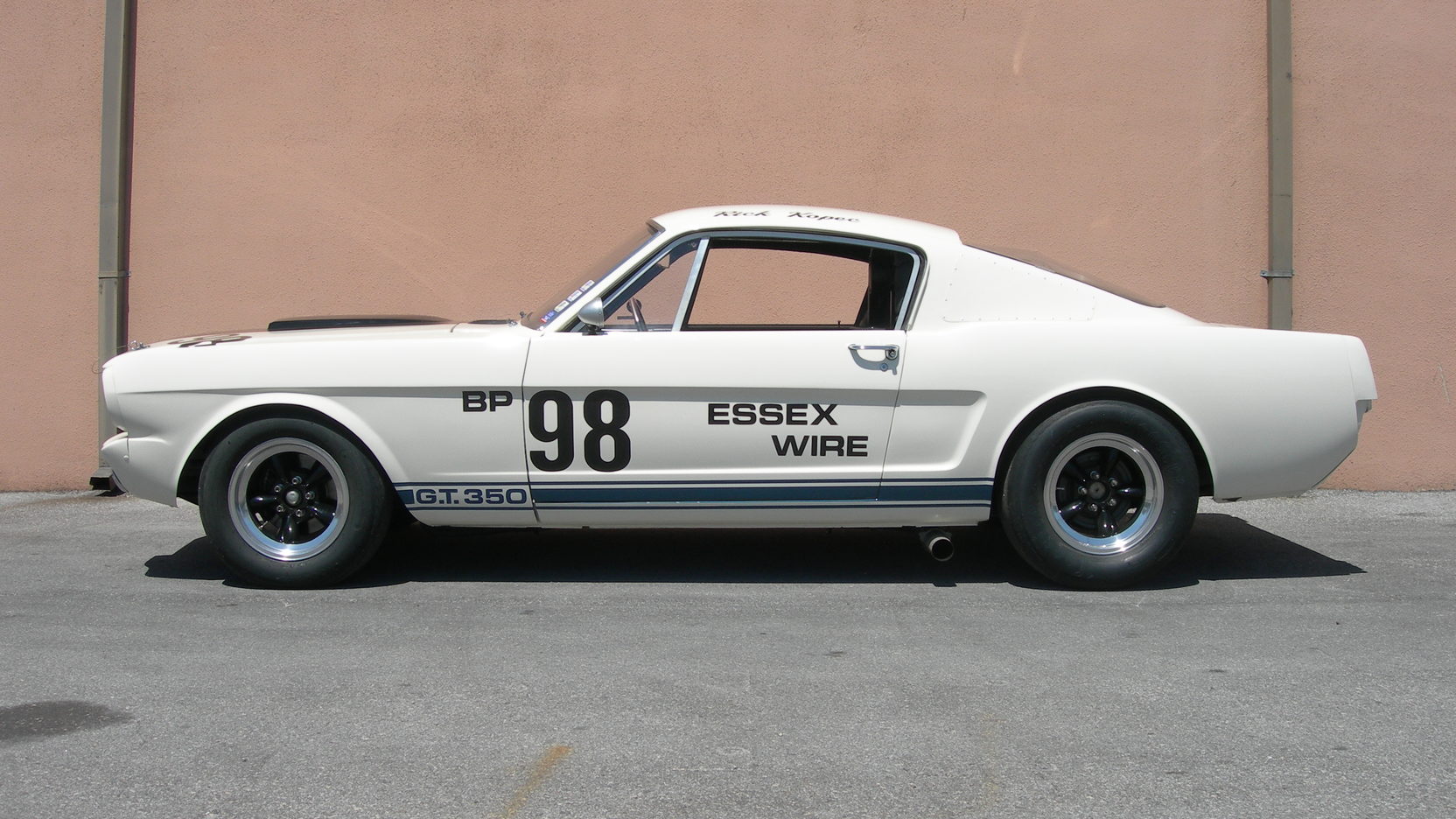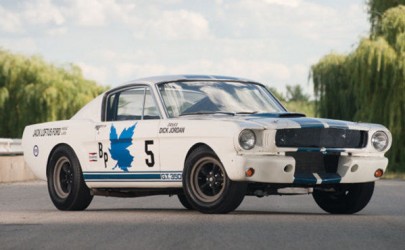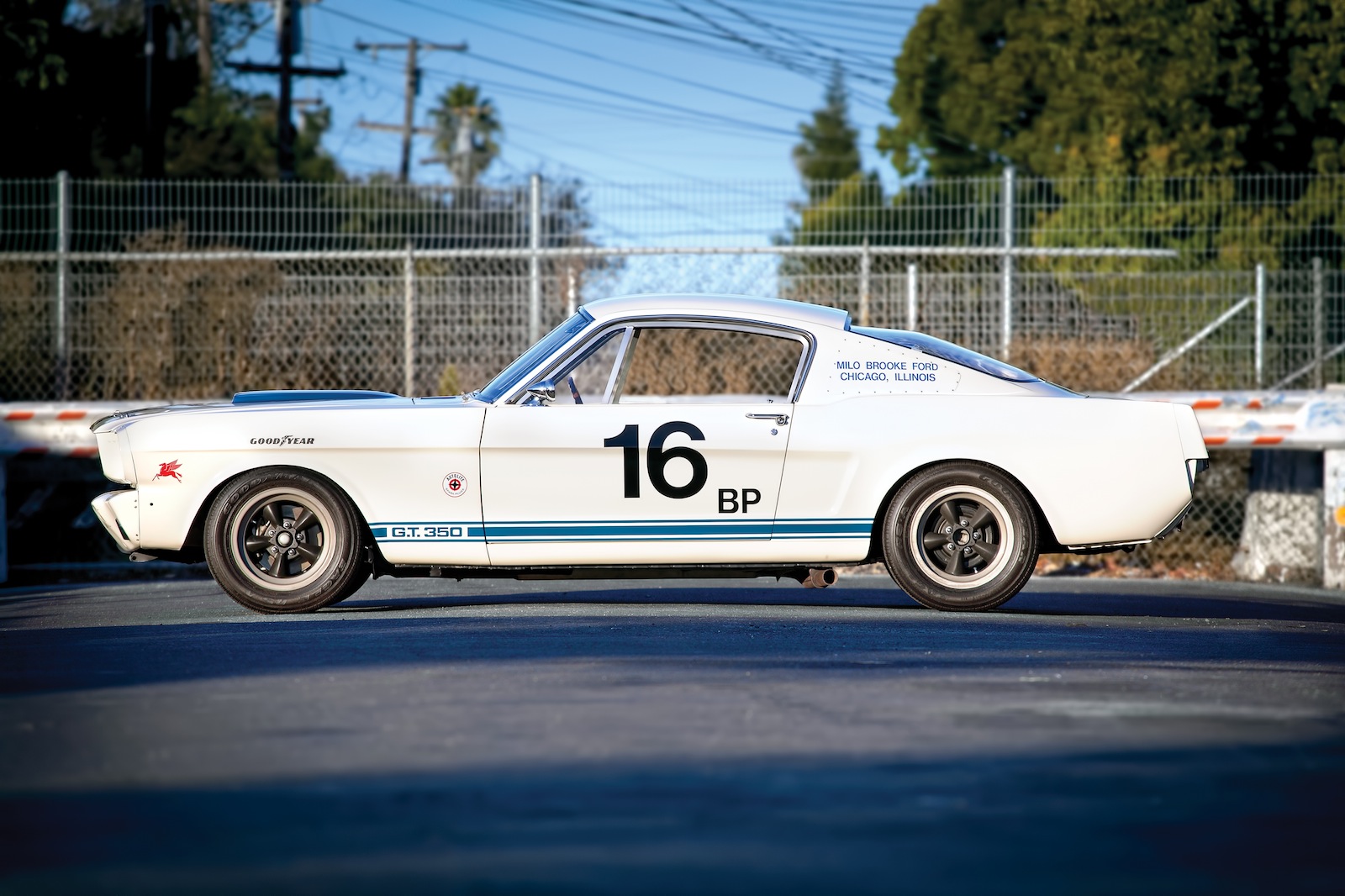For the Mustang, racing notoriety came early. By 1965, the Mustang, still very much in its infancy, began making a name for itself on the track. Much of this early success came on behalf of famed racer and designer, Carrol Shelby, and his high-output GT350R series of Mustang. Not only did the GT350R blaze a path of racing success, but it inspired a generation of performance-minded Shelby Mustangs to follow.
For a number of years, the Shelby GT350R served as Ford’s turnkey racecar, competing heavily in the SCCA’s B/Production class. For Shelby and his team’s efforts, the GT350R achieved significant success on the track, taking the checkered flag at numerous events, and competing at some of the world’s most illustrious venues, such as Sebring and Daytona.
A Ford/Shelby Joint Venture
Upon first approaching Carrol Shelby, Ford’s then-Vice President, Lee Iacocca, was insistent upon qualifying the Mustang for the SCCA Production class competition. This was an idea that intrigued Shelby and sent his design prowess into high gear. With an agreement between the famed designer and automotive giant in place, Ford began shipping special optioned 1965 Mustangs to Shelby’s California facility.
These Mustangs arrived void of side or rear windows, heaters, defrosters, upholstery, headliners, or insulation. Each of these Mustangs also came equipped with 271 HP, 289 cubic-inch V8 powerplants. With vehicles in-house, Shelby and his team got down to the business of creating a race car that both he, and Ford, could be proud of.
Building A Legend
Shelby came armed with a lengthy list of modifications in mind, all of which were intended to make the GT350R into a formidable race car. In order to bolster the stock 289 cubic-inch V8’s output, Shelby added a High-Rise aluminum intake manifold, Holley four-barrel carburetor, and Cyclone Tri-Y headers. An oil cooler was also included to keep engine temperatures in check.
In its heavily modified form, the high-performance, K-code, 289 cubic-inch V8 was reported to have produced 350+ HP, which was quite remarkable in its day. This refined powerplant was mated to an aluminum case Borg Warner T-10M four-speed transmission.
Additional Shelby derived performance modifications included the alteration of the GT350R’s front-end suspension pick-up points, the addition of traction bars, the installation of a new differential, and the fitment of a larger, 34-gallon fuel tank.
Inside, Shelby’s vision for the GT350R focused little on comfort, and more on weight reduction. The race-bred Mustang was essentially void of all creature comforts, and lightweight metal panels were riveted in place to cover any voids. A four-point roll cage was subsequently added to the GT350R’s interior, as was a specialized instrument cluster, which included a tachometer and oil pressure gauge. The vehicle’s windows were also shrouded with plexiglass, fitted within lightweight aluminum frames.
Several alterations were made to the GT350R’s body. A distinctive fiberglass apron was added to the race-derived Mustang’s front-end, as was a set of fiberglass fender flares, intended to accommodate the Shelby’s 15×7” wheels.
In the end, Shelby and his team succeeded in tremendously cutting the GT350R’s weight. Chassis 5R002 weighed in at only 2,550-pounds and was capable of mid-5.0 second 0-60 MPH times. This GT350R, driven by Ken Miles, would go on to claim a first-place victory in Texas. During the course of the race, the very same GT350R would be sent airborne, giving birth to the car’s “Flying Mustang” nickname.
Ironically, chassis 5R002 would later be purchased by a Ford Performance Division engineer, located in Dearborn, Michigan. This GT350R would go on to be outfitted and raced with an experimental GT40 engine, to a substantial degree of success.
Photo Credit: Motorauthority
A Race-Inspired Legacy
The GT350R’s legacy stems far beyond its actual on-track success. In fact, the famed racer played a key role in the subsequent development of Shelby’s production GT350 line, as well as virtually every other Shelby derived Mustang to come, in the years that followed.
Ultimately, the GT350R’s success garnered the Mustang much of its early performance merit. Had it not been for the GT350R, the Mustang might have forever been known simply as a sporty grocery-getter.
1965 Shelby Mustang GT350R Specifications
| Engine | 289 CID V8 |
| Horsepower | 350 horsepower |
| Torque | 350 lb-ft torque |
| 0-60 MPH | 5.5 sec |
| Quarter Mile Time | 13.6 sec |
| Weight | 2,550 lbs |
| Base Price | $5,595 |
| Production Numbers | 36 |
Available Exterior Colors
All 1965 GT350Rs were painted Wimbledon White with Guardsman Blue stripes.
1965 GT350R Shelby Mustang Video
We found a great video about the ’65 Shelby GT350R.






